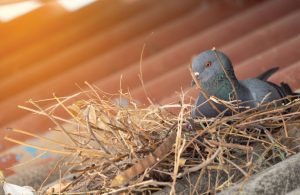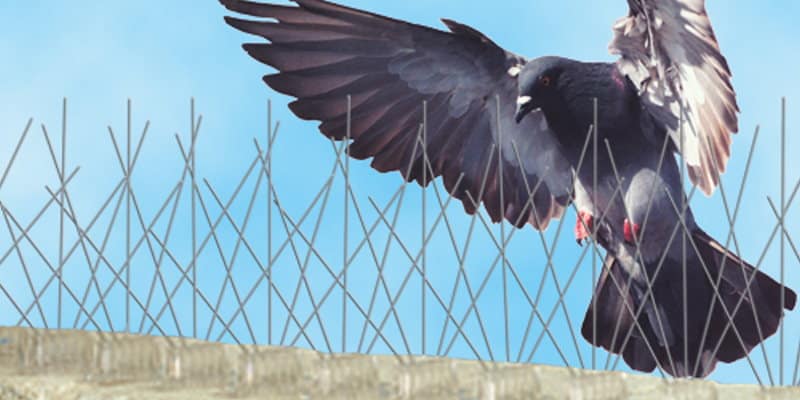Birds as Pests: Control Techniques for Effective Management
Birds play a vital role in our ecosystem, but when they become pests, they can cause significant problems for agriculture, property, and public health. From damaging crops to creating unsanitary conditions, pest birds can be a nuisance. Understanding effective control techniques is crucial for managing bird populations and minimizing their impact. In this article, we will explore various methods for controlling pest birds, ensuring a balanced approach that protects both human interests and wildlife.
Understanding the Impact of Pest Birds
Common Pest Bird Species
Certain bird species are more likely to become pests due to their behavior and feeding habits. Common pest birds include:
Pigeons: Often found in urban areas, pigeons can carry diseases and cause property damage.
Sparrows: These small birds can invade gardens and agricultural fields, damaging crops.
Starlings: Known for their large flocks, starlings can devastate fruit crops and compete with native species.
Crows and Ravens: These intelligent birds can raid garbage and feed on crops, leading to significant agricultural losses.
Negative Effects of Pest Birds
The presence of pest birds can lead to various issues, including:
Property Damage: Birds can damage roofs, gutters, and siding with their droppings and nesting materials.
Health Risks: Bird droppings can harbor pathogens, posing health risks to humans and pets.
Crop Destruction: Pest birds can decimate crops, leading to financial losses for farmers and gardeners.
Competition with Native Species: Non-native pest birds can outcompete native birds for resources, disrupting local ecosystems.
Control Techniques for Managing Pest Birds
Effective bird control requires a combination of methods tailored to the specific species and the environment. Here are some commonly used techniques:
1. Exclusion Methods
Exclusion involves preventing birds from accessing certain areas. This method is often the most humane and effective way to control pest birds.
Physical Barriers: Installing bird netting, mesh, or spikes can block access to nesting sites and feeding areas. For example, netting can protect fruit trees and gardens from birds.
Sealing Entry Points: Inspect buildings for openings where birds can enter and seal them to prevent nesting. This includes closing gaps around windows, vents, and eaves.

2. Habitat Modification
Modifying the environment can make it less attractive to pest birds.
Removing Food Sources: Ensure that garbage is secured and food scraps are cleaned up promptly. Avoid feeding birds in areas where they become pests.
Altering Nesting Sites: Trim trees and remove old nests to discourage nesting in unwanted areas. This can help reduce populations over time.
3. Scaring Techniques
Scaring birds can deter them from specific areas. However, these methods often require regular changes to remain effective.
Visual Deterrents: Using reflective tape, fake owls, or balloon predators can scare birds away. These visual aids simulate predators and create an unsettling environment for pest birds.
Auditory Deterrents: Noise devices that mimic predator calls or distress signals can help scare birds. However, these should be used sparingly to avoid disturbing other wildlife and residents.
4. Chemical Repellents
Chemical repellents can be used to deter birds from feeding on crops or nesting in unwanted areas.
Taste Aversion: Some repellents make food unpalatable to birds without harming them. These products can be sprayed on crops to reduce feeding.
Odor Repellents: Certain scents can deter birds from areas. However, the effectiveness of these repellents can vary, and they should be used in conjunction with other methods.
5. Trapping and Relocation
In some cases, trapping may be necessary to manage pest bird populations.
Live Traps: These humane traps allow for the capture of birds without harming them. Once captured, the birds can be relocated to a suitable environment away from urban areas.
Regulations: Always check local laws and regulations regarding trapping and relocating birds, as some species are protected by law.
Integrated Pest Management (IPM) for Birds
What is IPM?
Integrated Pest Management (IPM) is a holistic approach to pest control that combines various strategies for effective management. This approach considers the life cycle of pests, their environmental impact, and the potential consequences of control methods.
Implementing IPM for Pest Birds
To effectively manage pest birds using IPM, consider the following steps:
Monitoring: Regularly observe bird activity to identify problem areas and specific species involved.
Assessment: Evaluate the extent of the bird problem, including the type of damage caused and the species involved.
Control Measures: Implement a combination of the control techniques discussed above, tailored to the specific situation.
Evaluation: Monitor the effectiveness of the control measures and make adjustments as needed.
Conclusion
Managing pest birds requires a comprehensive understanding of their behavior and the impact they can have on our environment. By employing a combination of control techniques—such as exclusion, habitat modification, scaring methods, chemical repellents, and trapping—property owners and farmers can effectively reduce the problems caused by pest birds.
Implementing an Integrated Pest Management approach ensures that control efforts are effective, humane, and environmentally responsible. With the right strategies in place, it is possible to coexist with our feathered friends while protecting our properties and crops from the negative effects of pest birds.


